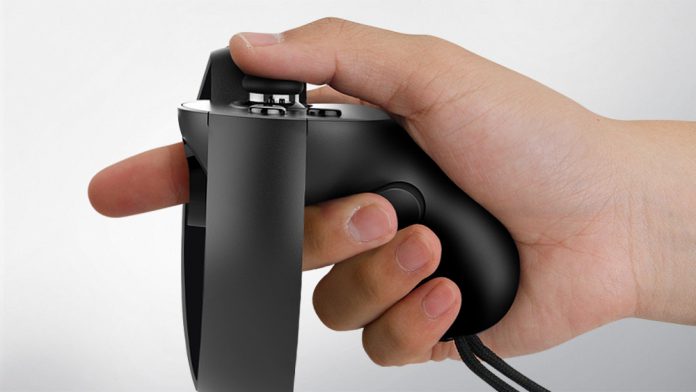According to a new report from Microsoft sleuth Walking Cat, the Microsoft Research division has published a paper for a project that improves VR controls. Specifically, the research adds bimanual haptics to virtual reality. In a paper titled Haptic Links: Bimanual Haptics for Virtual Reality Using Variable Stiffness Actuation, Microsoft’s team has developed a new haptic feedback system. allows haptics to simulate the force between two separate sensors. Connections are created through electro-mechanics that can create variable stiffness between two VR controllers. Called Haptic Links, the ability dynamically alters force between a hand and objects: “We present Haptic Links, electro-mechanically actuated physical connections capable of rendering variable stiffness between two commodity handheld virtual reality (VR) controllers. When attached, Haptic Links can dynamically alter the forces perceived between the user’s hands to support the haptic rendering of a variety of two-handed objects and interactions. They can rigidly lock controllers in an arbitrary configuration, constrain specific degrees of freedom or directions of motion, and dynamically set stiffness along a continuous range. We demonstrate and compare three prototype Haptic Links: Chain, Layer-Hinge, and RatchetHinge. We then describe interaction techniques and scenarios leveraging the capabilities of each. Our user evaluation results confirm that users can perceive many two-handed objects or interactions as more realistic with Haptic Links than with typical unlinked VR controllers.” https://twitter.com/h0x0d/status/967205072198254593 To explain how Haptic Links works in a real-world situation, Microsoft created a YouTube video to explain the projects. At the moment, the technology is firmly in research and will not be something we expect to see for some time.
Developing Haptic Feedback in Virtual Reality
In May 2017, Microsoft Research discussed a project that showed how real-world interactions could function in virtual reality. The project was demoed on Minecraft and could solve one of the key limitations of VR. One of the biggest problems for virtual reality is that it immerses users in a completely fabricated environment. That’s, but real interactions like those in mixed and augmented reality are impossible. Microsoft Research’s project could solve that problem: “Manipulating a virtual object with appropriate passive haptic cues provides a satisfying sense of presence in virtual reality. However, scaling such experiences to support multiple virtual objects is a challenge as each one needs to be accompanied with a precisely-located haptic proxy object. We propose a solution that overcomes this limitation by hacking human perception. We have created a framework for repurposing passive haptics, called haptic retargeting, that leverages the dominance of vision when our senses conflict. With haptic retargeting, a single physical prop can provide passive haptics for multiple virtual objects. We introduce three approaches for dynamically aligning physical and virtual objects: world manipulation, body manipulation and a hybrid technique which combines both world and body manipulation. Our study results indicate that all our haptic retargeting techniques improve the sense of presence when compared to typical wand-based 3D control of virtual objects.”




